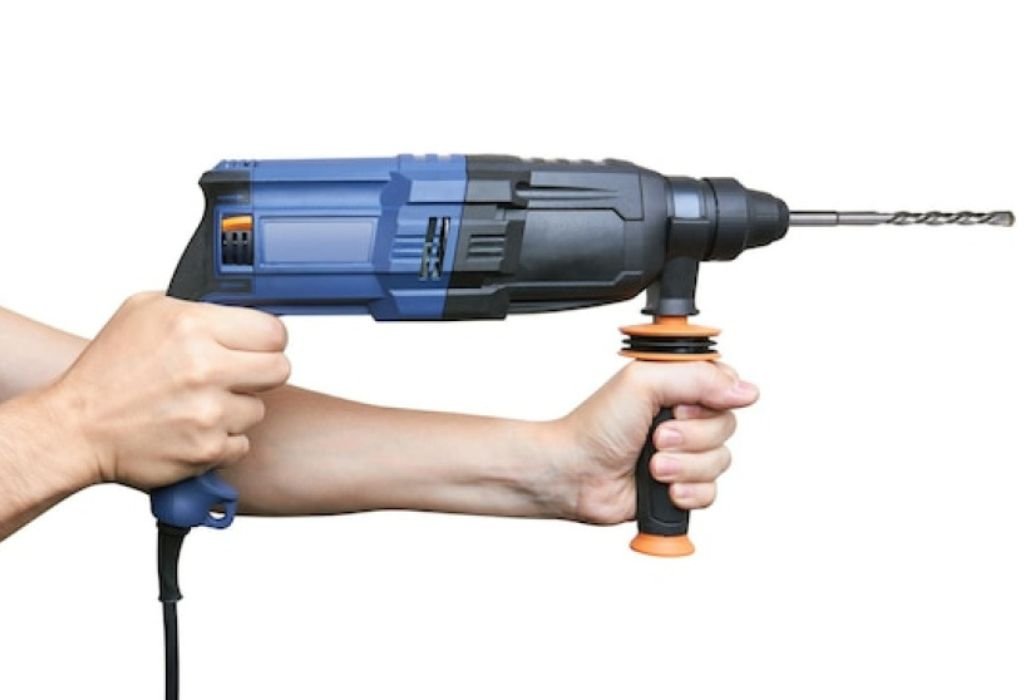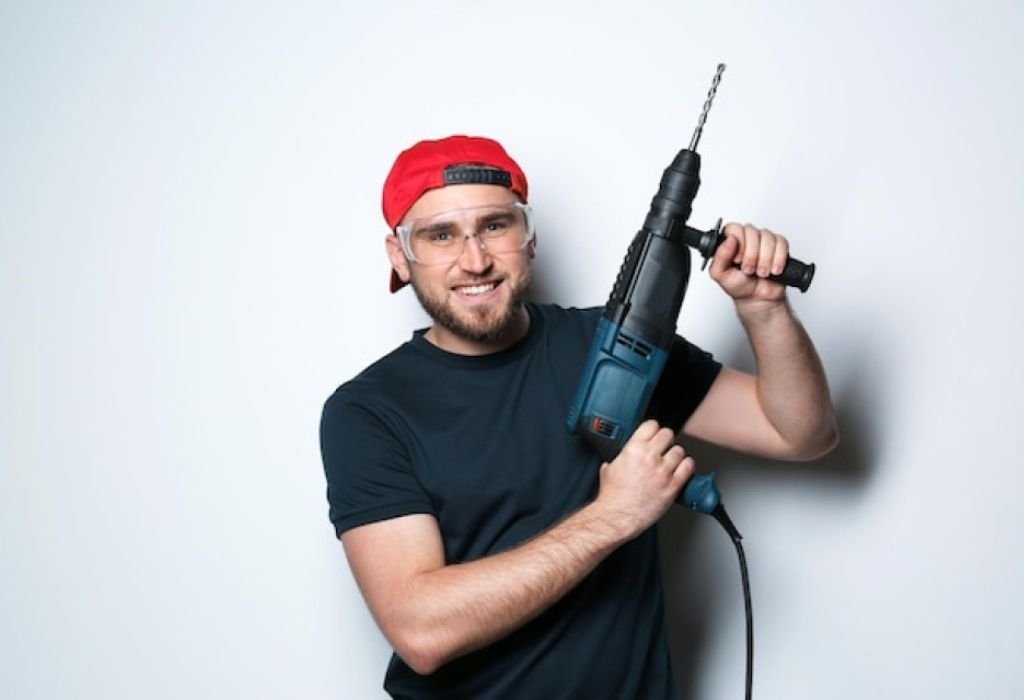Imagine drilling into concrete when suddenly the bit jams, and the rotary hammer twists violently in your hands.
Such moments highlight why controlling a tool’s rotation is critical for both safety and efficiency.
A rotary hammer is designed to break through the toughest masonry, but when it keeps turning unexpectedly, the situation can quickly turn dangerous.
Each year, thousands of power tool injuries are reported, many caused by loss of control during binding or sudden rotation (source).
Curiosity often arises among professionals and DIY users alike: can you actually stop a rotary hammer from turning?
The answer depends on understanding how the tool works and the safety features built into modern designs.
Manufacturers now include mechanisms like slip clutches, electronic anti-rotation systems, and hammer-only modes to prevent uncontrolled spinning.
The benefits go beyond safety. Preventing unnecessary rotation protects the tool’s internal gears, extends its lifespan, and reduces fatigue for the user.
Research shows that modern anti-rotation systems significantly cut the risk of injury and equipment failure (source).
This guide explores whether you can stop a rotary hammer from turning, how the built-in systems function, and the steps you can take to avoid binding and kickback. It also provides practical troubleshooting tips and insights into future technologies that aim to make these powerful tools safer than ever.
What Is a Rotary Hammer & How Does It Work

A rotary hammer is a power tool built to drill into dense materials like concrete and stone. It combines rotation with a hammering piston mechanism that delivers powerful impact force.
Unlike a standard hammer drill, which vibrates the bit while rotating, a rotary hammer uses a piston-driven system to strike the bit forward, producing much greater force. This makes it ideal for heavy-duty masonry and demolition tasks.
Most rotary hammers use the SDS system (SDS-Plus or SDS-Max), which allows bits to slide in the chuck while staying locked securely. This design ensures efficient energy transfer during hammering.
Modern rotary hammers also include features such as safety clutches, torque limiters, and mode selectors. These features help control rotation and protect both the user and the tool from sudden torque spikes or binding events.
What distinguishes a rotary hammer from a hammer drill?
A hammer drill vibrates the bit, while a rotary hammer drives a piston for stronger impact force.
What is an SDS chuck in a rotary hammer?
It is a specialized bit system (SDS-Plus or SDS-Max) that locks bits in place while allowing sliding for hammer action.
How does a slip clutch protect the tool?
It disengages when torque exceeds safe limits, preventing dangerous over-rotation.
Why is torque control important in a rotary hammer?
It prevents sudden twisting when bits jam, improving safety and tool longevity.
Can a rotary hammer operate without rotation?
Yes, in “hammer-only mode,” the tool provides impact without turning, ideal for chiselling or demolition.
Why Would You Want to Stop a Rotary Hammer’s Rotation?
There are situations where disabling rotation is essential for safety or performance. Chiselling or demolition requires hammer-only action without turning.
When the bit binds in concrete or catches on rebar, the uncontrolled spinning can cause severe wrist or arm injuries. Preventing rotation protects both operator and tool.
Stopping unnecessary rotation also reduces wear on the gearbox and extends the life of internal parts.
Can you disable rotation while chiselling?
Yes, most rotary hammers include a hammer-only mode for chiselling tasks.
Is it safe to stop the motor forcibly?
No, sudden forceful stops can strain gears. Always rely on built-in safety systems.
Does every rotary hammer have an anti-rotation feature?
No, only premium or newer models include electronic kickback or anti-rotation systems.
What happens if the bit binds without safety features?
The tool may spin violently, risking injury and internal damage.
Can misuse cause tool failure if rotation is stopped improperly?
Yes, forcing a stop without the correct mechanism can damage the clutch or bearings.
Mechanisms That Prevent or Stop Rotation in Rotary Hammers
Different systems exist to stop or limit rotation safely. Mechanical slip clutches disengage when torque spikes. Electronic systems detect binding and shut down the motor instantly.
Mode selectors also allow users to switch off rotation, leaving only the hammering function for chiselling. Premium models feature advanced systems like magnetic clutches or active torque control.
How does a slip clutch work to stop rotation?
It slips or disengages the drive when torque exceeds safe limits.
What is an electronic anti-rotation system?
It uses sensors to detect binding and shuts down the motor.
What role does the mode selector play?
It switches between drilling, hammering, or both.
Can anti-twist magnetic clutches prevent accidents?
Yes, they sense twist and decouple the drive almost instantly.
Do most modern rotary hammers have kickback control?
Many premium models now include built-in kickback control.
How to Stop a Rotary Hammer from Turning (Practical Steps)
Stopping rotation safely means using the right features rather than forcing the tool. Always set the correct mode before starting.
For chiselling, select hammer-only mode. For drilling, ensure the safety clutch is functional. Choose tools equipped with kickback or anti-rotation systems.
How do you set a rotary hammer to hammer-only mode?
Turn the selector switch to the hammer symbol without rotation.
What if the selector is stuck?
Clean or lubricate the mechanism, and replace if worn.
Can you retrofit anti-rotation features?
No, they are built-in design elements.
What emergency action should you take if the tool spins uncontrollably?
Release the trigger immediately and reset the mode.
Does using correct bits reduce binding?
Yes, sharp SDS bits sized correctly reduce jamming risks.
Diagnosing Why Rotation Isn’t Stopping
Sometimes rotation persists even when it should not. This may be caused by worn clutches, damaged selectors, or faulty sensors.
Dirt and debris can jam mechanisms. Incorrect usage, such as setting the wrong mode or using oversized bits, also causes problems.
Why does rotation continue in hammer-only mode?
The selector or cam may be damaged or misaligned.
What signs suggest clutch failure?
Slipping under low load or sudden violent torque.
Can electronic anti-rotation systems fail?
Yes, sensor or wiring issues can disable them.
How do you test a safety clutch?
Apply load gradually and check if the clutch disengages safely.
When should you seek repair?
When rotation control systems fail despite proper settings.
Best Practices & Preventative Measures

Using the tool correctly prevents most issues. Always match the mode to the task and ensure bits are sharp.
Regular maintenance of clutches, selectors, and sensors keeps safety features reliable.
Does proper technique reduce binding risk?
Yes, steady feed pressure and correct angles help prevent jams.
Should bits be replaced when dull?
Yes, worn bits increase torque spikes and binding.
How often should tools be maintained?
After heavy use or as per manufacturer guidelines.
Do vibration controls help reduce accidents?
They reduce fatigue, which lowers the chance of misuse.
Is a modern model safer than an older one?
Yes, newer hammers often include advanced anti-rotation technology.
Advanced & Future Trends in Rotation Prevention
Technology continues to evolve. New sensors detect sudden torque changes with greater accuracy. Smart systems can brake motors electronically.
Manufacturers are also exploring IoT-enabled monitoring and AI-based prediction for tool failures.
What new sensors improve anti-rotation?
Accelerometers and torque sensors detect binding instantly.
Can tools actively brake rotation?
Yes, electronic motor braking is already in some designs.
Are dual clutches effective?
They provide extra safety by adding redundancy.
Will IoT monitoring improve tool safety?
Yes, connected tools can record binding events and warn users.
Is AI being developed for tool safety?
Future designs may predict failures before they occur.
Conclusion
Yes, you can stop a rotary hammer from turning, but only by using the correct built-in features. Mode selectors, safety clutches, and anti-rotation systems are designed to handle torque safely.
Relying on proper technique, regular maintenance, and modern safety features ensures both tool longevity and operator protection.
When choosing a rotary hammer, prioritize models that include advanced anti-rotation controls. By doing so, you reduce risks, extend the life of your tool, and work with greater confidence.

I’m John F. Nicholas, the founder, lead writer, and drill enthusiast behind 101drill.com. With years of hands-on experience in power tools and DIY projects, I created this platform to share practical knowledge, expert tips, and real-world insights to help others master the art of drilling.
